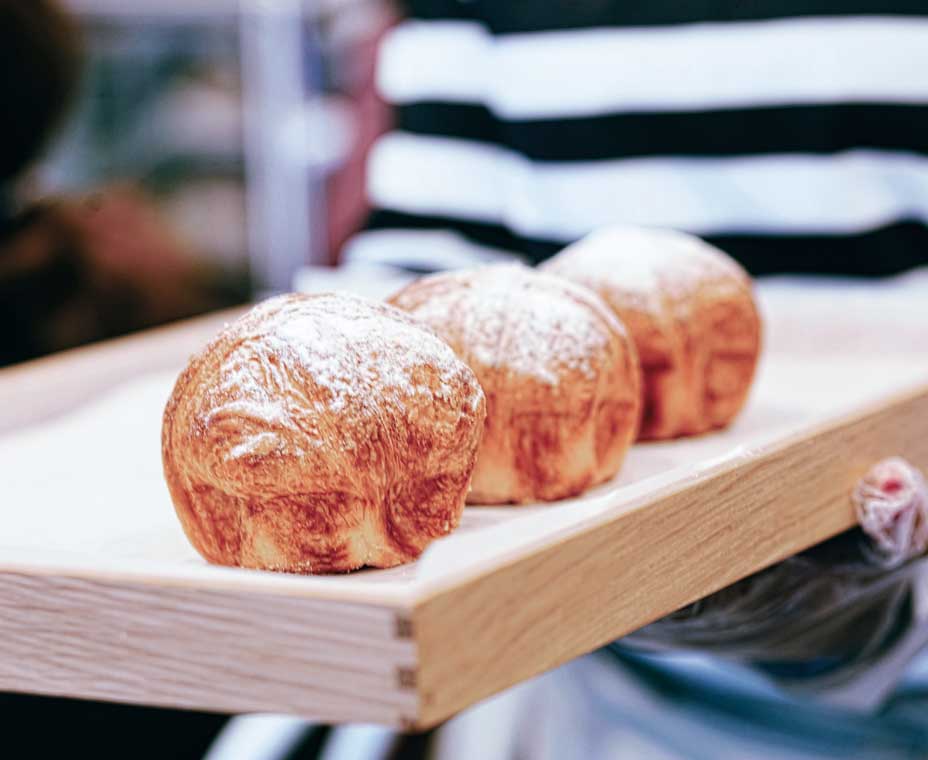The roots of the now global brand Paris Baguette date back to 1945, when a small confectionary known as Sangmidang opened in Seoul, South Korea.
It would be another 40 years before the brand began to grow. It evolved to become a made-from-scratch concept known as Paris Croissant in 1986 and then became Paris Baguette two years later. Now with 3,800 locations worldwide, Paris Baguette is hoping to turn U.S. customers onto the brand through an aggressive growth plan.
“It’s unbelievable within the Asian community how well Paris Baguette is known, but also how much awareness is being spread right now,” says Larry Sidoti, the chain’s chief development officer. “The interesting thing about the brand is it transcends any group. It’s an Asian-infused French bakery concept. Basically, it’s a French concept with added oomph.”
While Paris Croissant proved difficult to scale given its made-from-scratch menu, Paris Baguette provides conglomerate owner SPC Group with a model that has capitalized on flash-frozen dough that is distributed to each location and baked there.
“It’s not the cheapest way to go, but it is the most effective, and it builds brand loyalty,” Sidoti says. “You can tell by the reaction on people’s faces when they bite into one of our products how much they understand or appreciate that they’re getting fresh product throughout the day and night.”
The brand now has 58 U.S. locations, with plans for 350 by 2020. SPC Group, which also operates Jamba Juice, Baskin-Robbins, and Shake Shack locations in South Korea, plans to rely heavily on franchising to meet this goal.
Out of the 350 locations, SPC plans to franchise 300. “We’re looking for really great franchise partners who want an opportunity to get in on the ground floor with an explosive brand,” Sidoti says. “And though it’s not well known today, two years from now it’ll be front-and-center in the category.”
Sidoti says the brand’s approach to baking and the product quality set it apart from competitors. Pastries include French standards like croissants and Danish Cream Cheese, but the dessert menu is bolstered by both American and Asian flavors. Drawing inspiration from the East, the selection includes a Green Tea Chiffon Cake and a shaved ice topped with mochi and bean paste. Similarly, an apple pie pastry and sweet potato cake exemplify more Western flavor profiles. The beverage menu runs the gamut, from espresso and caramel lattes to nonalcoholic mojitos and smoothies.
Paris Baguette
FOUNDER: Hur Young-In
U.S. HEADQUARTERS: Commerce, California
YEAR STARTED: 1988
ANNUAL SALES: >$100 million
U.S. UNITS: 57
FRANCHISE UNITS: 10
As for savories, sandwiches on ciabatta and baguettes—served hot or cold—are also popular with guests. Options include a caprese sandwich, a salami and roasted tomato melt, and a crab salad sandwich.
At new domestic stores, the brand prepares fresh sandwiches nearly every hour, which has doubled sandwich output and garnered positive customer responses, Sidoti says.
About 60 percent of guests opt for takeout, and restaurant locations have a self-serve component where customers can grab various items to take with them on the go.
“From a product standpoint, there are no baked goods on the market you can compare to it,” Sidoti says. “Our cakes, which are wildly popular, are very decadent, but also very light and airy and not as sweet as what the American palate is used to.”
Paris Baguette dials back the sweetness in its pastries, cakes, and other desserts, which Sidoti says allows the flavors to shine.
“The real showstopper is the pastries and dessert items. The baking that goes on and the smells from the pastries, the croissants, the sweets, and the fruits—that’s all part of the theater of it,” he says. “It makes for a great presentation and a unique customer experience.”
Each location does about $2.1 million a year in sales, and Sidoti says its success in difficult markets, including Manhattan and Los Angeles, proves the brand is ripe for growth. The plan now is to expand brand awareness and geographic footprint as much as possible. It’s a huge opportunity to expose some 300 million U.S. consumers to the concept and take it mainstream, he adds.
The brand plans to continue its expansion in California markets and on the East Coast, beginning with the New York City metro area, where it will open in various types of venues.
“We’ve had tons of interest in it because it’s a unique concept that has widespread appeal, and it does extremely high average unit volumes in all kinds of different settings,” Sidoti says. “We have a number of different types of settings; you can’t put your finger on it and just say, ‘We’re a mall concept; we’re a market and drug [store] concept.’ We’ve made it in all kinds of venues and different real estate options.”







